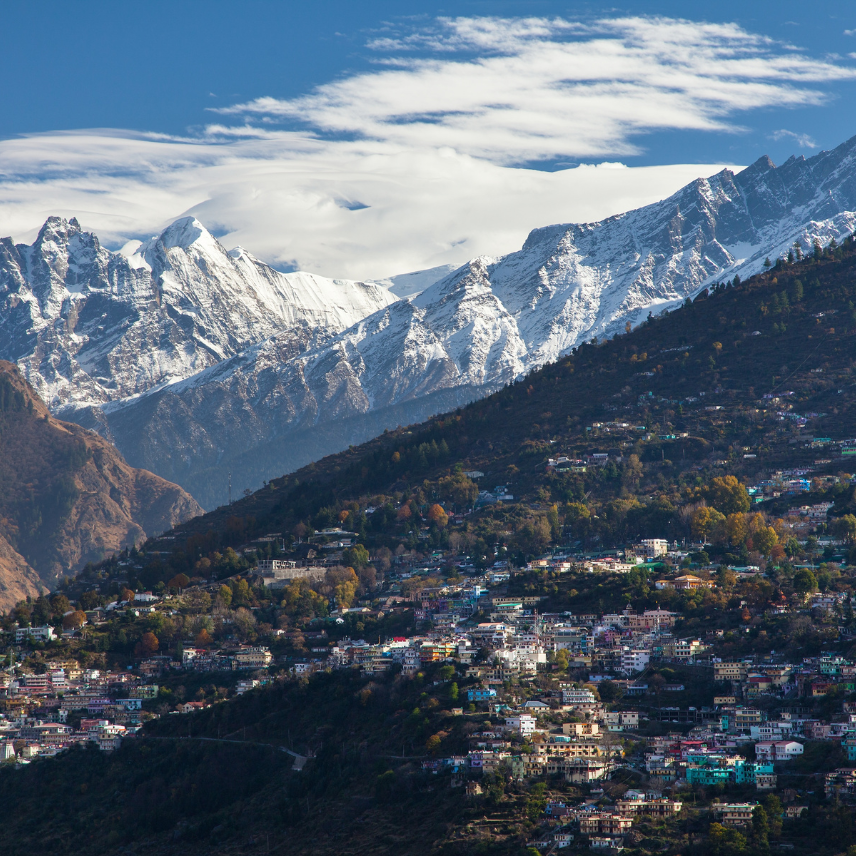Nestled in the heart of the Indian Himalayas, Joshimath is not just a picturesque town; it is a portal to the awe-inspiring landscapes and spiritual heritage of the region. Whether you're an adventure enthusiast, a nature lover, or a spiritual seeker, Joshimath offers a unique blend of experiences that make it a must-visit destination. Here’s a comprehensive guide to help you explore Joshimath and its surrounding wonders.
Nestled in the heart of the Indian Himalayas, Joshimath is not just a picturesque town; it is a portal to the awe-inspiring landscapes and spiritual heritage of the region. Whether you're an adventure enthusiast, a nature lover, or a spiritual seeker, Joshimath offers a unique blend of experiences that make it a must-visit destination. Here’s a comprehensive guide to help you explore Joshimath and its surrounding wonders.
A Brief Overview of Joshimath
Joshimath, also known as Jyotirmath, is a town located in Uttarakhand, India. Situated at an altitude of 1,890 meters (6,200 feet) above sea level, it serves as a vital stop for pilgrims and travelers heading to some of the most revered sites in the Himalayas. The town is strategically located at the confluence of the Dhauliganga and Alaknanda rivers, providing stunning river valley views and a serene environment.
Top Attractions in Joshimath
-
Adi Shankaracharya’s Math: Established by the revered philosopher Adi Shankaracharya in the 8th century, this monastery is a significant spiritual center. It is an important pilgrimage site for followers of the Advaita Vedanta philosophy and offers a peaceful retreat for meditation and reflection.
-
Narsingh Temple: Dedicated to Lord Vishnu in his Narsingh (man-lion) avatar, this ancient temple is a vital religious site for devotees. It’s renowned for its intricate carvings and serene ambiance, making it a must-visit for those interested in Hindu mythology and architecture.
-
Kalpavriksha: This sacred tree, believed to be over a thousand years old, is considered a divine entity by the locals. It is a spot of reverence and an excellent place for quiet contemplation.
-
Tapt Kund: Located a short distance from Joshimath, Tapt Kund is a natural hot spring. The waters are believed to have therapeutic properties, making it a popular destination for those seeking relaxation and healing.
Gateway to High Altitude Treks
Joshimath is not just a destination but a starting point for some of the most thrilling treks in the Himalayas:
-
Valley of Flowers: A UNESCO World Heritage Site, the Valley of Flowers is renowned for its vibrant meadows and diverse flora. The trek to this enchanting valley offers breathtaking views and an opportunity to witness a kaleidoscope of colors.
-
Auli: Just a short drive from Joshimath, Auli is a renowned skiing destination. The region offers pristine slopes and panoramic views of the surrounding peaks, making it an ideal spot for winter sports enthusiasts.
-
Hemkund Sahib: This sacred Sikh pilgrimage site is located at an altitude of 4,329 meters (14,200 feet). The trek to Hemkund Sahib is challenging but incredibly rewarding, with stunning alpine scenery and a serene lake surrounded by snowy peaks.
-
Gorson Bugyal: A picturesque high-altitude meadow, Gorson Bugyal is a popular trekking destination offering stunning views of the Nanda Devi and other surrounding peaks. It’s an ideal spot for those who enjoy trekking through lush greenery and alpine meadows.
Experiencing Local Culture and Cuisine
Joshimath is not just about natural beauty and spiritual sites; it also offers a rich cultural experience:
-
Local Cuisine: Sample traditional Garhwali dishes such as Aloo Keema, Chainsoo, and Raita. The local food is a delightful mix of flavors and ingredients unique to the region.
-
Cultural Festivals: If you’re visiting during a festival, such as Makar Sankranti or Holi, you’ll experience vibrant celebrations and traditional music and dance.
-
Handicrafts: Explore local markets for traditional handicrafts, including woolen shawls, embroidered fabrics, and wooden carvings. These make for excellent souvenirs and gifts.
Travel Tips
-
Best Time to Visit: The ideal time to visit Joshimath is between May and October. During these months, the weather is pleasant, and the trekking trails are accessible. Avoid the monsoon season (July-August) due to heavy rainfall and potential landslides.
-
Permits: Some treks and areas around Joshimath may require permits. Ensure you have the necessary permissions and check the current regulations before planning your trip.
-
Accommodation: From luxury hotels to budget guesthouses, Joshimath offers a range of accommodation options. Book in advance, especially during peak seasons.
-
Health and Safety: Due to the high altitude, acclimatization is essential to avoid altitude sickness. Stay hydrated, avoid strenuous activities in the initial days, and consult a doctor if necessary.
Conclusion
Joshimath is more than just a stopover; it is an entryway to the profound beauty and spiritual essence of the Himalayas. With its rich cultural heritage, stunning landscapes, and proximity to some of the region’s most famous trekking routes, Joshimath promises an unforgettable experience. Whether you're embarking on a spiritual journey, an adventurous trek, or simply looking to escape into nature, Joshimath offers a perfect blend of all. Pack your bags, embrace the spirit of adventure, and let Joshimath unveil the Himalayan wonders that await you.



